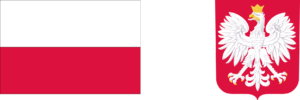Latvia’s policies toward assimilation remain one of the most contested aspects of its post-Soviet transformation. Since regaining independence in 1991, the country has pursued a nation-building project aimed at strengthening Latvian language, culture, and identity after decades of Soviet rule. Yet this process has unfolded against the backdrop of a diverse population, in which a significant share consists of Russian speakers and other post-Soviet minorities.
Historical Background
During the Soviet period, Latvia experienced large-scale migration from across the USSR. Russians, Belarusians, Ukrainians, and other nationalities arrived as part of Soviet industrial and administrative policies, which profoundly altered the demographic balance. By the late 1980s, ethnic Latvians made up barely half of the republic’s population, sparking concerns about the survival of Latvian culture and language.
With independence in 1991, the government prioritized restoring the centrality of the Latvian language and limiting the political influence of newly arrived groups. Citizenship laws required knowledge of Latvian and restricted automatic citizenship to pre-1940 residents and their descendants. As a result, hundreds of thousands of Soviet-era settlers and their families became “non-citizens,” a legal status unique to Latvia and Estonia.
Assimilation Policies Today
Current policies emphasize integration through the Latvian language. Schools are gradually transitioning to Latvian as the primary language of instruction, with only limited space left for Russian-language education. Public administration, signage, and media are also tightly regulated to ensure Latvian primacy.
The government frames these measures as essential for state cohesion and security, particularly in light of Russia’s aggression in Ukraine and its use of “compatriot protection” narratives. For Latvian authorities, assimilation reduces the risk of external influence among Russian speakers.
Tensions and Social Realities
However, for many Russian-speaking Latvians—roughly a quarter of the population—assimilation policies are often perceived as exclusionary. Older generations, less fluent in Latvian, face barriers in employment and political participation. Some communities feel their identity is being marginalized, while others gradually adapt and embrace bilingualism as a pragmatic choice.
At the same time, younger Russian speakers increasingly integrate into Latvian society. Generational change, urbanization, and EU membership have fostered more nuanced identities, with many considering themselves both Latvian citizens and culturally Russian.
The Broader Post-Soviet Context
Latvia’s approach mirrors broader challenges faced by other post-Soviet states: balancing the desire to protect national culture with the reality of diverse, Soviet-shaped societies. In Estonia, similar debates rage over language and citizenship, while in Ukraine, questions of identity and assimilation have taken on existential importance during wartime.
Latvia’s policies reveal the complexity of building a cohesive nation-state in a multiethnic environment shaped by forced migration, geopolitical pressures, and contested histories. For supporters, assimilation is vital for sovereignty and cultural survival. For critics, it risks alienating large groups of citizens who could otherwise contribute to a pluralistic Latvian identity.






